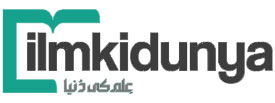-
 Home
Home
-
 News
News
Latest Educational News Stories
Daily update of all national, international news, picture stories, college / university announcements and educational events.
-
 Colleges
Colleges
Pakistan's Largest Database of Colleges and Universities
Explore Largest Directory of Private and Govt. Colleges, Universities and find best institute for your future Education.
-
 Courses
Courses
-
 Admission
Admission
-
 Lectures
Lectures
-
 Online Test
Online Test
Short Question
- 9th Class Physics Short Questions
- 9th Class Chemistry Short Questions
- 9th Class Math Short Questions
- 9th Class Biology Short Questions
- 9th Class Computer Short Questions
- 9th Class English Short Questions
- 10th Class Physics Short Question
- 10th Class Chemistry Short Question
- 10th Class Math Short Question
- 10th Class Biology Short Question
- 10th Class Computer Short Question
- 10th Class English Short Question
-
 Past Papers
Past Papers
-
 Date Sheets
Date Sheets
-
 Results
Results
Exam Results 2024
Check online Results 2024 Matric Inter BA BSc B.Com MA MSc M.Com CSS PCS MCAT ECAT of all educational boards and universities in Pakistan
-
 Study Abroad
Study Abroad
Study Abroad Programs and Opportunities for Pakistani Students
Explore free study abroad search to find programs, consultants, events to study in USA, UK, Australia, China, Malaysia and many others.
-
 Jobs
Jobs
-
 Tutors
Tutors
-
 More
More
-
 Apps
Apps
MCQ's Test For Chapter 0 "FSC Part 2 Mathematics Chapter 5 Online Test"
Try The MCQ's Test For Chapter 0 "FSC Part 2 Mathematics Chapter 5 Online Test"
-
Total Questions20
-
Time Allowed30
Question # 1
A function, which is to be maximized or minimized is called an ________:
Question # 2
x = 4 is the solution of inequality:
Question # 3
A solution of a linear inequality in x and y is an ordered pair of numbers, which _______ the inequality.
Question # 4


Question # 5
The order (or sense) of an inequality is changed by ________, it each side by a negative constant.
Question # 6
There are _______ feasible solutions in the feasible region:
Question # 7
If the line segment obtained by joining any two points of a region lies entirely within the region, then the region is called _________:
Question # 8
A line which divides a plane into two parts is called:
Question # 9


Question # 10


Question # 11
The inequality x < a is the open half plane to the __________ of the boundary line x = a:
Question # 12
-4 < y < 4 is the solution of the following:
Question # 13
A point of a solution region where two of its boundary lines intersects is called a __________ point of the solution region:
Question # 14
A corner point is the point of intersection of:
Question # 15
The inequality y > b is the open half plane to the ______ of the boundary line y = b:
Question # 16
ax + b > c is an inequality of:
Question # 17
The feasible region is ________ if it can easily by enclosed within a circle.
Question # 18
x = a is a vertical line perpendicular to __________.
Question # 19
x = 2 is a vertical line perpendicular to _____________:
Question # 20
There are _______ ordered pairs that satisfy the inequality ax + by > c.
FSC Part 2 Mathematics Chapter 5 Online Test MCQ's
Top Scorers Of Chapter 0 "FSC Part 2 Mathematics Chapter 5 Online Test" MCQ`s Test
-
Q Qadir Chaudhary 30 - Oct - 2024 02 Min 12 Sec 20/20 -
N Nayab Munawer 17 - Sep - 2024 02 Min 43 Sec 20/20 -
A Asad Ali 08 - Sep - 2024 01 Min 16 Sec 19/20 -
M Mominatariq 18 - Sep - 2024 02 Min 13 Sec 19/20 -
E Eman Fatima 22 - Sep - 2024 03 Min 52 Sec 19/20 -
R Rida Virk 08 - Jan - 2025 07 Min 32 Sec 19/20 -
F Fiza Ali 09 - Sep - 2024 01 Min 24 Sec 18/20 -
B Baig 01 - Nov - 2025 02 Min 08 Sec 18/20 -
A Ahmed Shaaff 21 - Oct - 2024 03 Min 16 Sec 18/20 -
A Ali Hassan 19 - Nov - 2024 11 Min 15 Sec 18/20 -
M Meerab Fatima 22 - Oct - 2025 26 Min 17 Sec 18/20 -
S Shabana Naeem 11 - Jan - 2025 03 Min 09 Sec 17/20 -
M Muzammil Abbas 24 - Oct - 2024 03 Min 26 Sec 16/20 -
S Saim G 13 - Aug - 2025 05 Min 05 Sec 16/20 -
Z Zonia Amer 10 - Jul - 2024 07 Min 03 Sec 14/20
FSc Part II Mathematics Chapter 0 Important MCQ's
| Sr.# | Question | Answer |
|---|---|---|
| 1 | A line which divides a plane into two parts is called: |
A. Boundary point
B. Boundary line
C. Feasible line
D. None
|
| 2 | For different values of k, the equation 4x + 5y = k represents lines ______ to the line 4x + 5y = 0. |
A. Perpendicular
B. Parallel
C. Equal
D. None of these
|
| 3 |

|
A. Left or right
B. Upper or lower
C. Open
D. None of these
|
| 4 | A solution of a linear inequality in x and y is an ordered pair of numbers, which _______ the inequality. |
A. Does not satisfy
B. May be stisfied
C. Satisfies
D. None of these
|
| 5 | A point of a solution region where two of its boundary lines intersects is called a __________ point of the solution region: |
A. Maximum
B. Corner
C. Minimum
D. None of these
|
| 6 |

|
A. Above
B. Left
C. Below
D. Right
|
| 7 |

|
A. One variable
B. Three variable
C. Two variable
D. Four variable
|
| 8 | x = c is a vertical line parallel to __________. |
A. x-axis
B. y-axis may be
C. y-axis
D. None of these
|
| 9 | A function, which is to be maximized or minimized is called an ________: |
A. Maximum function
B. Objective funciton
C. Minimum function
D. None of these
|
| 10 |

|
A. One variable
B. Three variable
C. Two variable
D. Four variable
|








.jpg)













Share your comments & questions here
Guest User
13 Feb 2020Nice
zubair shafiq
11 Jan 2018wow! this is really a great oppurtunity for students to prepare themselves.THANKS ILMKIDUNYA!!!!!!!!!!!!!!!!!!!!!!!!
hussnain
17 Dec 2017hhhh